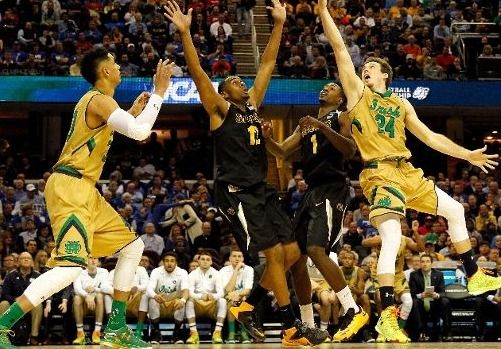Traditional Media Companies Took Ad Revenue Hit in April
Standard Media Index sees 35% decline

The COVID-19 pandemic chopped ad spending by 35% in April and traditional media companies suffered the brunt of the damage, according to research company Standard Media Index.
All of the major media companies took double-digit drops from a year ago, with AT&T’s WarnerMedia registering the biggest drop of 50.8% as its cable networks lost the NBA and NCAA Men’s Basketball Tournament (Turner Sports had the Final Four and the championship game this year) to the virus.
Sports was also a factor as Fox’s ad revenues were down 46% and ViacomCBS shed 42.8%.
The Walt Disney Co., which owns ESPN, dropped 33.3%. Comcast's NBCUniversal, which carries the NHL’s Stanley Cup playoffs, was down 33%.
“April 2020 marks the first full month of an economic slowdown, the first in over ten years. The results, however, have been the same with previous recessions, with marketers cutting back on their advertising commitment,” said James Fennessy, CEO of SMI. “Of course, the absence of live premiere sporting events has also been a major factor to the unparalleled decline in ad dollars”.
Discovery, which doesn't rely on sports in the U.S., saw its ad revenues decrease by 29.8%. SMI said Discovery’s decline was an indication that advertisers were slashing TV budgets across all programming genres.
The digital giants -- Facebook and Google -- were down, but suffered less than the traditional media companies. Facebook fell 25.1% Google lost 23.6%.
Multichannel Newsletter
The smarter way to stay on top of the multichannel video marketplace. Sign up below.
In April, digital’s share of ad spending was 47% in April, up from 43% in the first quarter.
“With stay-at-home consumers watching more online content, it’s not surprising that in April, advertisers allocated a greater percentage of dollars in digital media,” Fennessy said.
Similarly, the smaller impact on digital spending let Google leapfrog over Disney to become No. 1 in terms of share of the advertising market at 12%, up 1.7%. Disney was No. 2 with a 11% share, followed by Comcast and ViacomCBS at 10%, Facebook at 6%, WarnerMedia at 5%, Discovery at 4% and Fox with 3%. The remaining 40% share was divided up among smaller media companies.
Disney and Comcast had the biggest share of video advertising, each with a 19% share. The top eight companies had 83% of video ad revenue. Traditional media accounted for 36% of all ad dollars compared to a 20% share for digital video.
SMI also said that 11 of the 12 product categories it measures registered double digit declines in ad spending. The pharmaceutical category was the only one to show an increase, up 4%.
The industries most affected by stay-at-home orders showed big drops. Travel advertising plummeted 89%, restaurants slid 52% and retail dropped 51%.
Automotive spending dropped 64%, and tech company hacked ad spending by 26%.
“We can expect to see these declines across virtually every product category for the next few months. As with previous recessions, ad spending will improve, once unemployment drops and consumers feel confident about the economy,” Fennessy said. “As the pandemic and recession continue, SMI will closely monitor the ad revenue impact it is causing with media companies and the ad spending.”
SMI gets its data from the invoices sent by media companies to the most of the largest media buying groups.
Jon has been business editor of Broadcasting+Cable since 2010. He focuses on revenue-generating activities, including advertising and distribution, as well as executive intrigue and merger and acquisition activity. Just about any story is fair game, if a dollar sign can make its way into the article. Before B+C, Jon covered the industry for TVWeek, Cable World, Electronic Media, Advertising Age and The New York Post. A native New Yorker, Jon is hiding in plain sight in the suburbs of Chicago.

